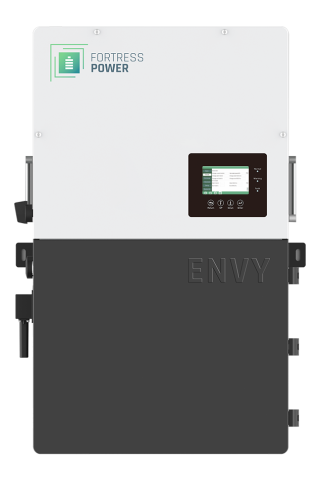Grumpycat
Veteran Member
Quite possible in peak sun hours. Is begging for a means of centrally throttling grid feed.I just read that in part of the Netherlands, the power company is paying homes with solar power to NOT produce power at certain times because the solar power is disrupting the grid in some areas. They have too many solar panels in some regions so PV can produce more power than can be used.
This one claims 96.5% to 99.9% efficiency:I am late to this discussion and the OP seems to have made the correct design decisions. Years ago I took a solar power class and I learned a few things:
- A rough estimate is that 77% of the power produced by the panels will make it to the power outlets. I wonder if this is still true due to more efficient invertors.

Fortress Power Envy 12kW - Fortress Power
The Fortress Power Envy 48v Inverter is available in 12k, 10k and 8k models.
 www.fortresspower.com
www.fortresspower.com
A grid tie inverter requires a pilot signal to sync it's generation. Is AC, can't just parallel DC batteries. The Tesla Powerwall 2 is able to provide that signal keeping grid tie inverters online.- Many people think that solar panels will provide power during a power outage, but they don't realized without battery storage, the solar panels will be disconnected from the grid. and thus one won't get power.
The hot thing today is hybrid inverters such as the Fortress Envy listed above and the Tesla Powerwall 3 which manages PV panels and batteries in one unit. Happily runs off-grid.
Is a matter of how difficult the paperwork. Is better to sell power for 2.5¢/kWh rather than throw it away.- It was better, at least in NC and I suspect in other states, to produce slightly less power than one uses to avoid "selling" power to the power company. Regulations to sell power to the grid change and can be a PITA to follow. It is just better to produce slightly less power than needed and not worry with selling to the grid. Or if one is going to over produce power, except that one is giving money to the power company.
Yes, the LiFePO4 cells are safer, accept 100% charge without excessive wear, but weigh more than lithium-ion. The weight makes almost no difference for home storage.The price of LiFePo batteries has really fallen over the last few years which makes having battery storage more reasonable.
Microinverters? One on each panel such as Enphase features? The cost is greater but has the ability to optimize each panel's production. And networked so as to monitor each panel individually. If one is partially covered it affects production of all panels in a string using a larger conventional inverter.When the inverter panels showed up I thought they were a good idea since they lower wiring cost but I have heard that some brands have had failures of the inverters but I think I would rather have inverters off the hot roof in an easily accessible place. Today, I think I would use Victron equipment for the invertors, battery chargers, batteries, etc. Though, Tesla's power wall is certainly interesting.
Some have come up with optimizers mounted on each panel yet still using the central inverter. SolarEdge uses optimizers on each panel costing less than Enphase, but then a large but simpler inverter for DC to AC conversion.
PV inverters must optimize the line voltage for maximized power production. PV panels need their output voltage optimized for solar brightness and temperature.

